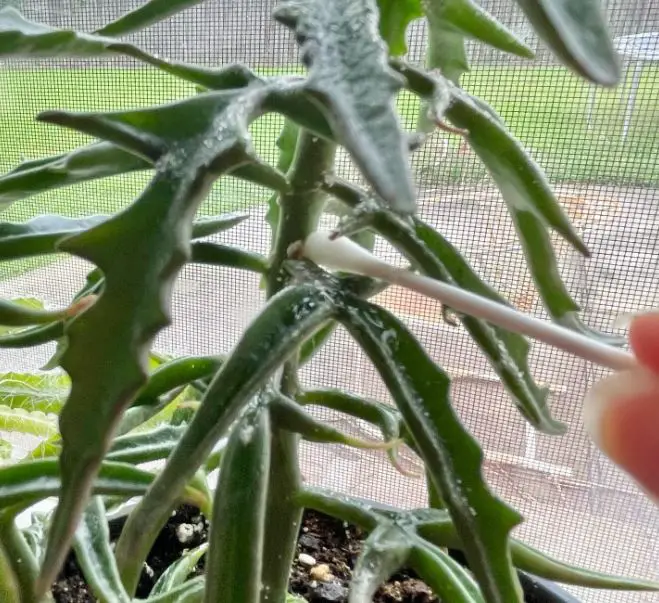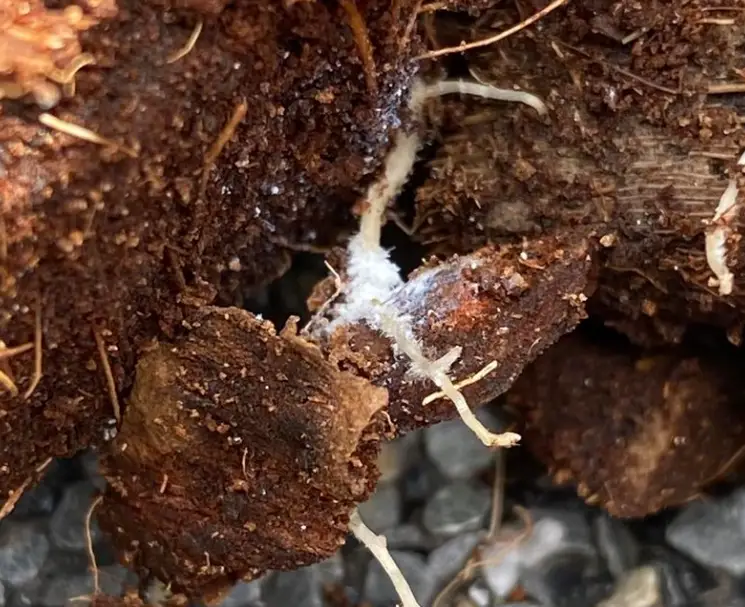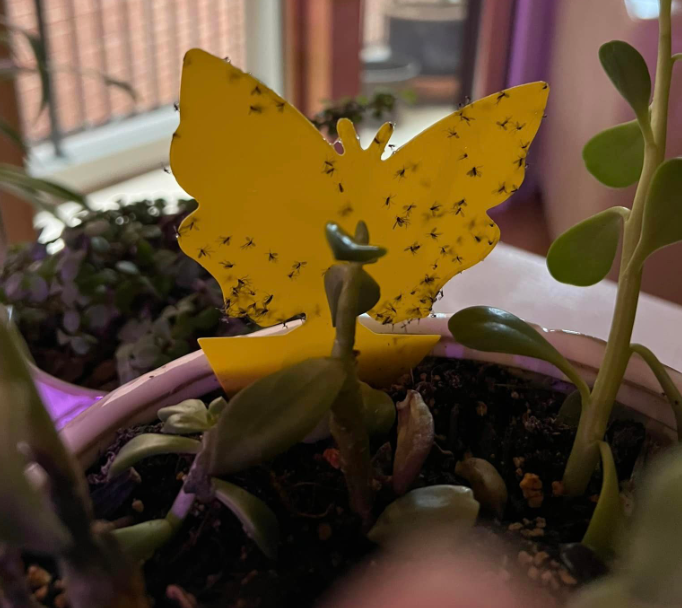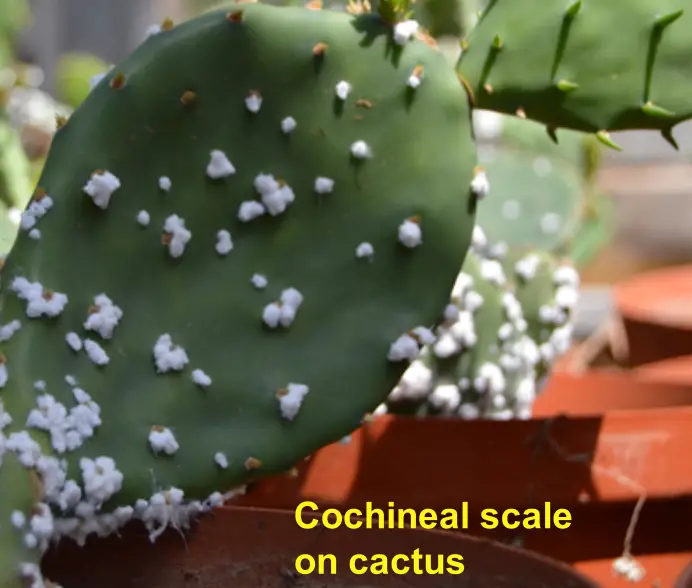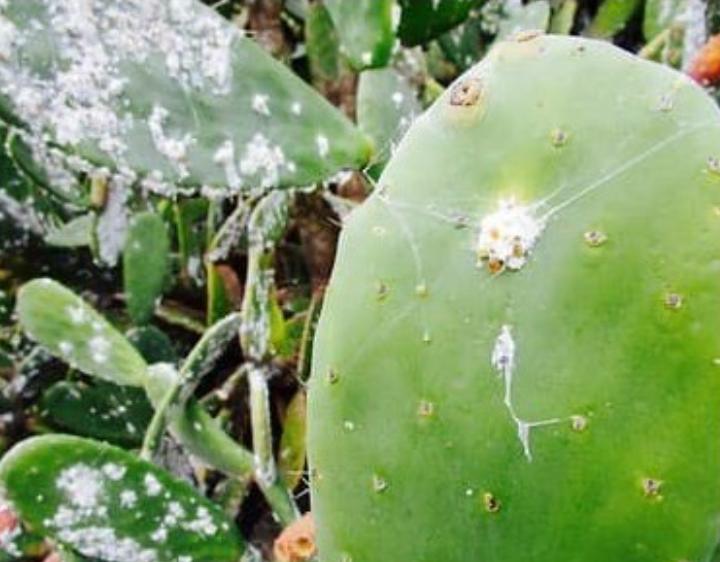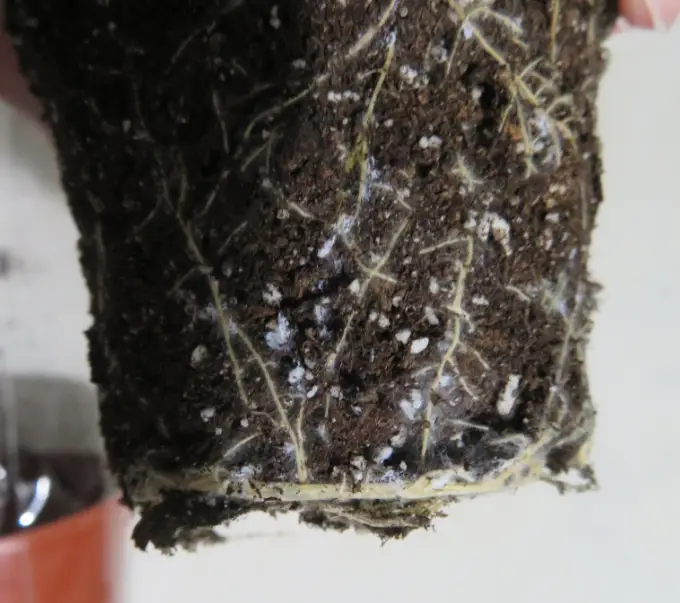Spider Mites on Cactus – Signs + How to Treat
Spider mites are tiny, spider-like insects that can infest cacti and other plants. They suck and feed on the plant’s sap, causing visible damage to the plant. In severe infestations, spider mites can cause irreversible damage or kill a cactus. Fortunately, early detection and control can help save the plant.
Just like the scale on cactus, spider mites can be difficult to detect and control especially in their initial stage of infestation. They usually take cover underside of the leaves or in crevices where stems and leaves meet. Since they spread quite fast, the immense damage they cause will hint at their presence.
Signs of spider mites on cactus
It is quite difficult to see spider mites with the naked eye, as they are only about the size of a pinhead. However, there are several signs that may show that you have spider mites on your cactus:
- Tiny webbing: Spider mites spin webs to protect themselves and their eggs. If you see tiny webbing on your cactus, this could be a sign of a spider mite infestation.
- Yellow or white stippling: Spider mites feed on the sap of the cactus, causing damages that appear as yellow or white dots on the stems.
- Leaf or flower drop: If you notice that important parts of your plants such as the flowers, leaves, or needles of your cactus are falling off, then it could be a sign of spider mite infestation.
- Stunted growth: Spider mites are known to target new growth in plants as the tissues are soft to puncture and suck the juice. This typically results in stunted growth.
- Presence of mites: You can use a microscope to examine your plant and you see small spider-like creatures crawling on your plant.
If you notice any of these signs on your cactus, it’s important to take quick action to get rid of the mites and prevent further damage to the plant.
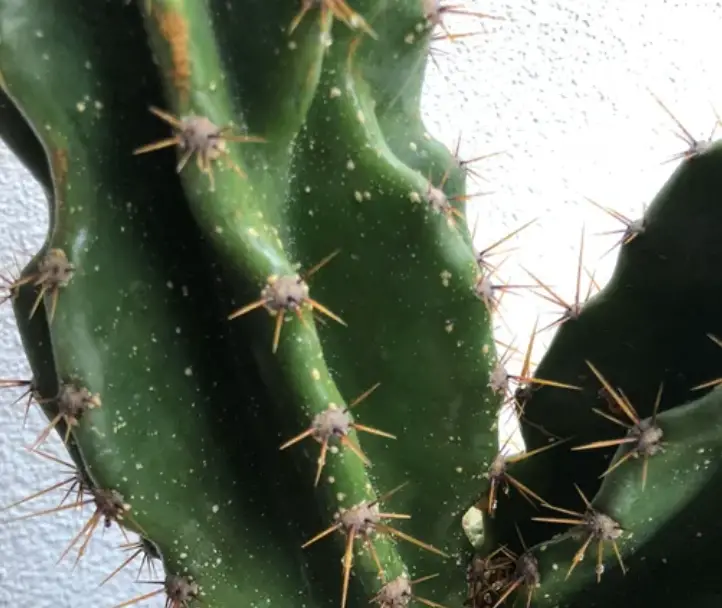
How to get rid of spider mites on cactus
If you suspect and confirm that your cactus has spider mites, there are several steps you can take to get rid of them:
- Inspect the cactus thoroughly. Spider mites are very tiny, so they may be difficult to spot. If you notice any of their sign then quarantine your plant and start treatment.
- Remove heavily-infested parts of the cactus. If you find an area of the cactus that is heavily infested with spider mites, it may be necessary to remove and dispose of it to stop the mites from spreading.
- Treat the cactus with an insecticide. Apply an insecticide specifically formulated for use on cacti and other succulents. Be sure to follow the instructions on the label for the best results.
- Use a natural remedy. Mix equal parts water and rubbing alcohol and spray the mixture onto the cactus. Isopropyl alcohol is highly effective against mealybugs on cactus, mites, scale, and other pests. It evaporates quickly, leaving no residue. Neem oil is also a natural insecticide that is safe for use on cacti.
- Cultural control approach. Improving the growing conditions for the cactus will make the plant less suitable for pests. Ensure the cactus is receiving the right amount of light and water, the soil is draining well and there is good ventilation around the plant.
- Isolate the affected cactus. To prevent the spider mites from spreading to other healthy plants, it’s a good idea to isolate the infected cactus from your collection until the problem is resolved.
By following the above steps, you should be able to get rid of spider mites on your cactus and prevent them from returning in the future.
Can cactus recover from spider mite damage?
It’s possible for cactus to recover from spider mite damage, but it depends on the severity of the infestation and the overall health of the plant. Generally, if the infestation is caught early and dealt with promptly, the plant may be able to recover. However, a severely damaged plant may not recover.
If your cactus has been infested with spider mites, the first step is to quarantine the plant and remove any infested parts. The application of a recommended insecticide should follow. This should help to kill the mites and prevent them from spreading further.
It’s also important to improve the growing conditions for the cactus. Spider mites thrive in dry, hot conditions, so by providing the cactus with the right amount of light and water, and ensuring that the pot has good drainage, you may be able to prevent and control spider mite infestations.
Finally, it’s a good idea to monitor your cactus closely for any signs of new infestations and to take prompt action if any spider mites are detected. With proper care and attention, it may be possible to save your cactus from spider mite damage.
References
- Missouri Botanical Garden: Insect pests of cacti and succulents grown as house plants
- Arizona Cooperative Extension: Problems and Pests of Agave, Aloe, Cactus, and Yucca
- The Royal Horticultural Society: Glasshouse red spider mite
My name is Diane M Lewik, and I am the founder of this website. I am a degree holder in plant biology from the University of California – Berkeley. Over years, I have cultivated a vast collection of succulents and I have learned a great deal about how to grow and care for these unique plants.
